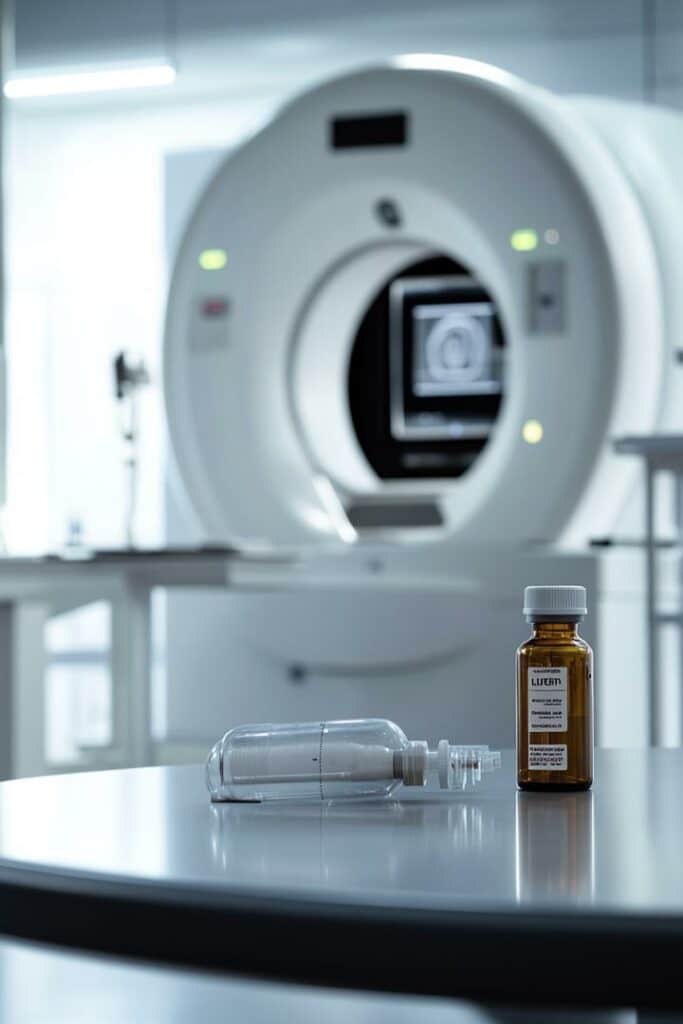Introduction
Lutetium: A Rare Earth Element with Big Potential in Medical and Petrochemical Industries
Lutetium is the last element in the lanthanide series and is among the rarest and most expensive rare earth elements. Known for its density and stability, Lutetium plays a critical role in specialized applications such as medical imaging, cancer treatment, and petroleum refining. Its unique properties make it valuable in creating catalysts and in radiotherapy for cancer patients. While its scarcity limits widespread use, Lutetium’s ability to enhance industrial and medical processes highlights its significance in high-tech and healthcare sectors.
History/Discovery
The Discovery of Lutetium: A Milestone in the Study of Rare Earths
Lutetium was independently discovered in 1907 by chemists Georges Urbain from France, Charles James from the United States, and Carl Auer von Welsbach from Austria. Urbain named it after Lutetia, the ancient Roman name for Paris, to honor the location of his research. For years, Lutetium remained primarily a scientific curiosity due to its scarcity and high cost. However, as advanced technologies evolved, Lutetium’s unique properties, particularly in catalysis and medical applications, were recognized. Today, Lutetium continues to support technological and medical advancements, demonstrating the value of rare earth elements in modern innovation.
Characteristics
Lutetium’s Distinctive Properties: Density, Stability, and Radiotherapeutic Potential
Lutetium is a dense, silvery metal that is one of the hardest and heaviest of the rare earth elements. Its high melting and boiling points make it suitable for high-temperature applications. Additionally, Lutetium has a radioactive isotope, Lutetium-177, which is valuable in targeted cancer therapies, providing a precise and controlled method for treating certain cancers with minimal damage to surrounding tissues. Lutetium’s thermal and chemical stability also makes it useful in catalysts for petroleum refining, where it increases efficiency and enhances process control. These unique traits make Lutetium indispensable in specific high-tech and medical applications.

Popular Applications
Lutetium’s Role in Catalysis, Cancer Therapy, and Advanced Imaging
Lutetium is primarily used in the medical field and petrochemical industries. Its radioactive isotope, Lutetium-177, is a key component in targeted radiotherapy for cancers like neuroendocrine tumors, where it provides effective treatment with fewer side effects. In the petrochemical industry, Lutetium serves as a catalyst, helping refine crude oil into valuable fuels and chemicals. Additionally, Lutetium’s high density and stability make it useful in advanced imaging techniques, including positron emission tomography (PET) scans, enhancing diagnostic accuracy. These applications showcase Lutetium’s unique contributions to medical science and industrial processes.
List of Popular Applications
- Cancer Treatment (Radiotherapy): Lutetium-177 is used in targeted cancer therapy, particularly for neuroendocrine tumors, providing precise and effective treatment.
- Petroleum Refining Catalysts: Lutetium’s stability makes it valuable in catalysts, enhancing the efficiency of petroleum refining processes.
- Advanced Imaging: Lutetium is used in PET scanners and other imaging devices, improving diagnostic accuracy in medical imaging.
- Scientific Research: Due to its rarity and high density, Lutetium is sometimes used in scientific research as a reference material for various experiments.
Where You Find Lutetium in the World
Global Production and Distribution of Lutetium
Lutetium is one of the rarest rare earth elements and is primarily sourced from minerals like xenotime and monazite. The majority of Lutetium production occurs in China, with additional reserves located in the United States, Australia, and Brazil. Extracting Lutetium is challenging and costly due to its low abundance and the complexity of separating it from other rare earth elements. As demand grows for Lutetium in specialized medical and industrial applications, efforts to develop sustainable sourcing and recycling methods have become increasingly important.
The Future of Lutetium
Expanding Applications in Medicine, Industry, and Environmental Research
As the demand for targeted cancer treatments and high-efficiency catalysts grows, Lutetium’s importance is expected to increase, particularly in healthcare and petrochemical industries. The use of Lutetium-177 in radiotherapy is anticipated to expand as medical technology advances, offering new avenues for cancer treatment. Additionally, Lutetium’s role in refining catalysts is likely to grow as industries seek more efficient and sustainable processes. Research into recycling Lutetium and exploring alternative sources is crucial for meeting future demand, ensuring a stable supply for high-tech applications that rely on this rare element.

